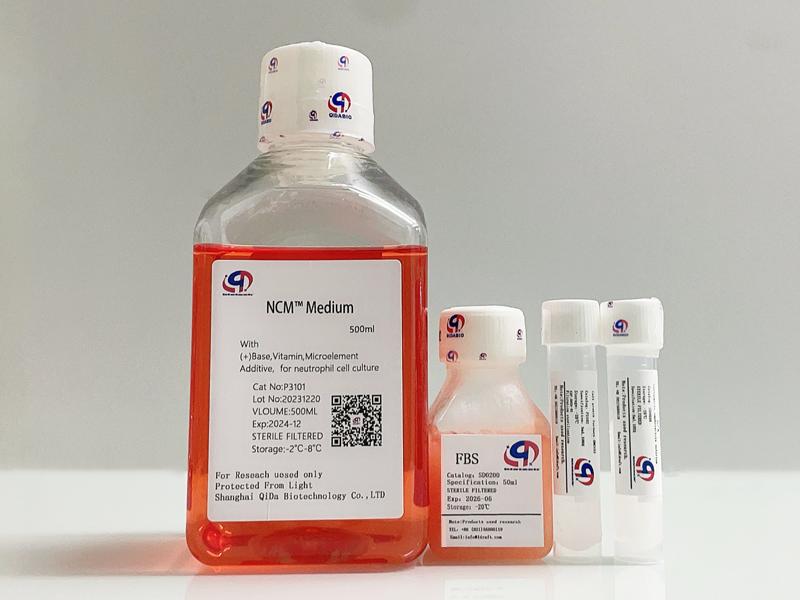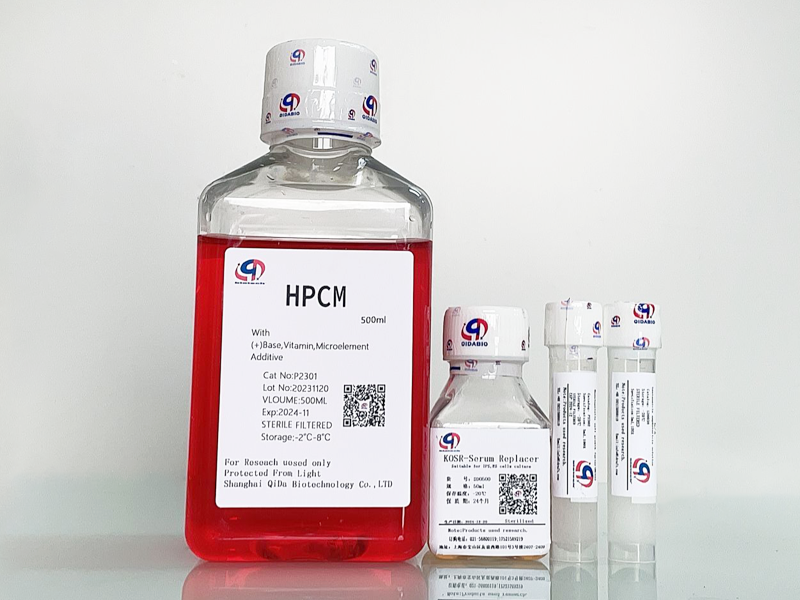Technical Support技术支持
CONTACT US
 400 179 0116
400 179 0116
24-hour service hotline marketing@ldraft.comE-mail
marketing@ldraft.comE-mail
Continuing from the previous version, other methods for separating blood cells
source:QiDa technoligy views:1234 time:2024-01-11
Percoll density gradient centrifugation method for isolating eosinophils from peripheral blood
1. Preparation of Pcrcoll suspension: Percoll 90ml, HBSS 9ml, HEPES (0.25mol/l) 1ml (pH 7.3), HCL (1mol/l) 0.4ml adjusted to pH 7.4;
2. The order of adding layer liquid: First add 4ml of 1.088g/ml Percoll solution to the bottom layer, then add 4Ml of 1.079g/ml Percoll solution to the second layer, and add 3ml of 1.070g/ml Percoll solution to the top layer to make three density gradient tubes for separating alkaline granulocytes;
3. Add fresh anticoagulant (anticoagulant with 0.1mol/EDTA pH 7.7) to an equal volume of Percoll density gradient stratified solution, centrifuge at 1200r/min for 25 minutes at room temperature;
4. Suck out each cell layer separately and place them in one test tube. Wash with Hanks solution free of Ca and Mg ions three times at 4 ° C, with a speed of 1200r/min each time. Centrifuge for 10 minutes and discard the supernatant;
5. Smear each layer of cells obtained separately, fix them, and stain them with Wright Giemsa staining solution. Under the microscope, examine the eosinophils (most of which are in the middle layer, but the density of eosinophils varies among different individuals, so they may appear in other cell layers). The eosinophils are stained purple red;

Peripheral lymphatic blood cell isolation (Ficoll density gradient centrifugation method)
1. Heparin anticoagulant venous blood, diluted with Hank's solution by approximately equal or twice the volume;
2. Gently apply the dropper onto the FICOLL, paying attention to: the action should be light and slow, and the interface between the blood layer and the FICOLL layer should be clear. The volume ratio of FICOLL to diluted blood can even reach 1:4;
3. Centrifuge: at a temperature of 25 degrees, 2000rpm for 20 minutes;
4. After centrifugation, aspirate the narrow white cloud like band in the middle (be careful not to aspirate into the FICOLL layer) and place it in another test tube;
5. Add as much Hank's solution as possible to wash the aspirated cells, wash twice at 1600rpm for 8 minutes;
6. Cell counting, seeding cells at a certain concentration into a culture plate and adding nutrient solution for cultivation;
7. When separating, special attention should be paid to temperature. FICOLL and Hank's liquids, as well as nutrient solutions, should be heated to 37 degrees before use; The interface between the blood layer and the FICOLL layer is clear; The FICOLL centrifuge temperature is 25 degrees and the brake function on the centrifuge cannot be used.
Peripheral lymphocyte isolation method
1.Add 5ml of anticoagulant slowly along the wall onto 5ml of lymphocyte separation solution (based on experience, it is best to use a 15ml centrifuge tube for separation. If the blood starts to be stored at 4 degrees, remember to warm it back to room temperature before adding);
2. Centrifuge 500g at room temperature for 20 minutes (it seems that the centrifugation time should not be too long, as too long will cause it to break away);
3. Take a cloud like white impurity band in the middle and place it in another 50ml centrifuge tube;
4.25ml PBS washing (if mixed with red blood cells, red blood cell lysis solution can be used before, lysis at 37 ° C for 5 minutes);
Centrifuge at 5.1000 rmp for 10 minutes;
6. Repeat 4 and 5;
Resuspend 7.2ml of 10% fetal bovine serum+RPMI1640;
8. Counting;
9. Adjust to 10ml and cultivate;
If cryopreservation is required, use cryopreservation solution (10% DMSO+20% fetal bovine serum+RPMI1640) at 4 ℃, 1-2h → -20 ℃, 0.5h (this step time should not be too long, otherwise the ice crystals are too large and harmful to cells) → -80 ℃ overnight, and then store in liquid nitrogen. If there were a box that could cool down once, it would be easy to freeze it. Just follow its instructions directly.

Monocyte isolation method
Dilute anticoagulants with equal volume of physiological saline and add them to the surface of Ficoll Hypaque separation solution in a plastic centrifuge tube. Centrifuge at 450 g for 25 minutes to collect mononuclear cells. Suspend cells in RPMI-1640 culture medium with 10 calf serum and place them in a 6x 6 cm glass culture dish. Incubate at 5% CO2 and 37 ℃ for 2 hours to collect adherent mononuclear cells. Suspend monocytes in RPMI-1 640 culture medium with 0.2 lactoglobulin, Wright stain count monocytes<95%, adjust cell density to 4 × 10/ml. Add the cell suspension to a 24 well culture plate and incubate at 5% CO2 and 37 ℃ for 24 hours. Centrifuge to collect the supernatant and freeze it in a 70 ℃ freezer for later use. Cell survival rate was measured by trypan blue staining before and after cell culture.
Separation and preservation of individual platelets
Under sterile operation, puncture the middle elbow vein to collect blood. Take fresh blood anticoagulated with 2% EDTA (1:9) and pass through 100 × G Centrifuge for 10 min to obtain platelet rich plasma (PRP), which is separated and purified by Sepharose 2B gel column balanced with Hepes Tyrodes eluant containing 1 g/L bovine serum albumin (BSA) to obtain platelet precipitation, and then use TEN buffer (0 05mol/L Tris2HCl, 0 15 mol/L NaCl, 6 mmol/L ED2TA, pH 7 4) Wash for three times, and finally suspend the platelets in TEN buffer, and adjust the platelet density to 1 × 109/ml, add a final concentration of 1 mmol/L benzylsulfonyl fluoride (PMSF) and 1% Triton X2100, place overnight at 4 ℃ in a refrigerator, and the next day at 10000 × Centrifuge for 15 minutes, take the supernatant as platelet fragmentation solution, divide and store at -20 ℃ for later use. Cell survival rate was measured using trypan blue staining before and after cell culture.








